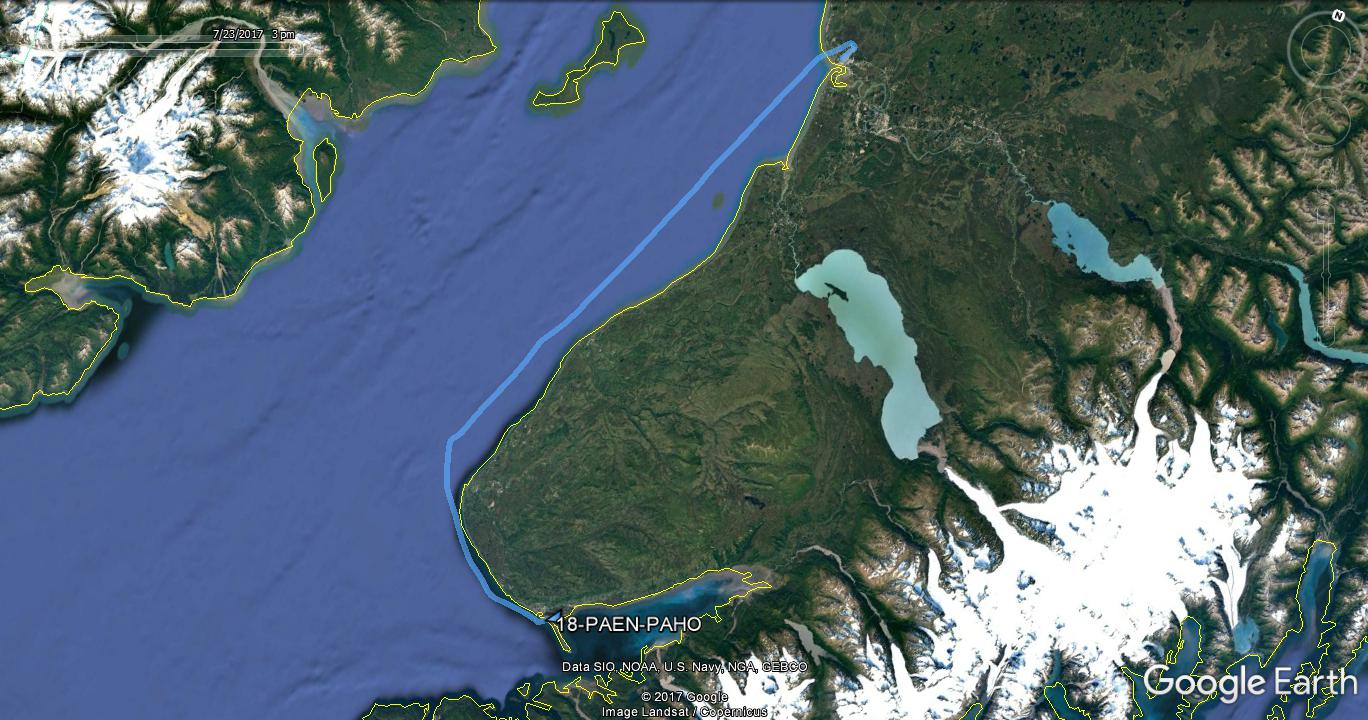
There are numerous bear viewing tours operating out of Anchorage and the coastal cities to the south. It felt like anyone with a bush plane was offering tours! Among the destinations for the tours was Brooks Falls, a particularly well known bear viewing area in Katmai National Park; various other lakes and beaches in Lake Clark and Katmai National Parks; and Kodiak Island. They all offered similar sounding experiences at similar rates, so due to indecision and the uncertainty of weather, I had put off making a reservation with any of them until now.
At one point in planning, I had considered flying out to King Salmon to catch a floatplane to Brooks Falls. Most of the commercial Brooks Falls tours flew you to King Salmon in conventional gear aircraft where you transferred to floatplane, but why pay someone else to fly me when I could do it myself? Kodiak looked like an interesting destination as well. However, as much as I was enjoying touring Alaska, I was now starting to think about the trip home. That would still take several days, plus possible weather delays along the coast.
I settled on Homer as a closer option with a number of tour companies on the airport. It was a short hop over from Kenai. There were some clouds along the immediate coast, so I flew a short way offshore to stay clear. Approaching Homer, the field was reporting 300 scattered, but the departure end of Rwy 4 looked like it was under the clouds. Back home in San Diego, the field would probably have been declared IFR, but here it was Alaska VFR.
| Final approach to Homer |
|
|
While I was loading things into the rental car, a couple walked up and asked whether I had been in Barrow last week. It was the folks in the 182 Tom had told me about a few days previously in Fairbanks! As big as Alaska is, GA makes it a small world.
If I wasn't already convinced how temperamental the weather in Alaska can be, a fog bank unexpectedly moved over the airport in the afternoon, forcing a group of bear tour aircraft to divert to nearby Ninilchik. They had sent a bus to fetch the passengers, and the pilots were waiting for the fog to move out so they could return.
I visited a few of the bear tour companies at Homer Airport. Some of the larger operations flew multiple aircraft on each trip, with groups of 20 or more. Others using only one aircraft advertised smaller groups. Most were flying tundra tires for beach landings, but some operated with floatplanes. I finally decided to go with Alaska Ultimate Safaris, partly because I liked the pilot/guides, but also because they were the only one using helicopters. I figured it would be a nice change from all my fixed-wing flying around. It turned out to be a great choice!
The helo was able to land quite literally in the field where bears were browsing. Within moments of getting out of the helicopter, one of the other passengers spotted a bear perhaps a couple hundred yards away in the mudflats behind us. The guide stood by while he and I got our fill of clicking photos of the bear. Shortly thereafter, we saw another bear in the tall grass only a hundred or so yards away. More clicking. It soon became evident there were bears all around us, and once we got to a good vantage point and they got used to our presence, a few wandered by very close - 40 feet if the distance data from my camera is accurate.
Due to some weather delays in the morning, our two guides Kirsten and Eric had taken to ferrying folks over in overlapping groups from Homer, dropping them off to pick up the next group. As a result, after my group with Kirsten joined up with Eric's group who had been on the ground for a while, he led his group back to the chopper... and left us. So there we were, six of us, in a grassy field 50 miles from anyplace that could be considered civilization, with no transportation other than our feet, surrounded at one point by 22 bears, with no firearms or even bear spray. There was something of a Jurassic Park-ish feel to it, but it was an incredible experience! I never felt unsafe - the bears were doing their thing browsing the grass or wandering out to the mudflats to seek fish (the salmon run had not yet started in earnest here) and took no interest in us. Too soon, the chopper returned, and it was time to head out.
| Enjoying a salad | Close enough? |
|
|
|
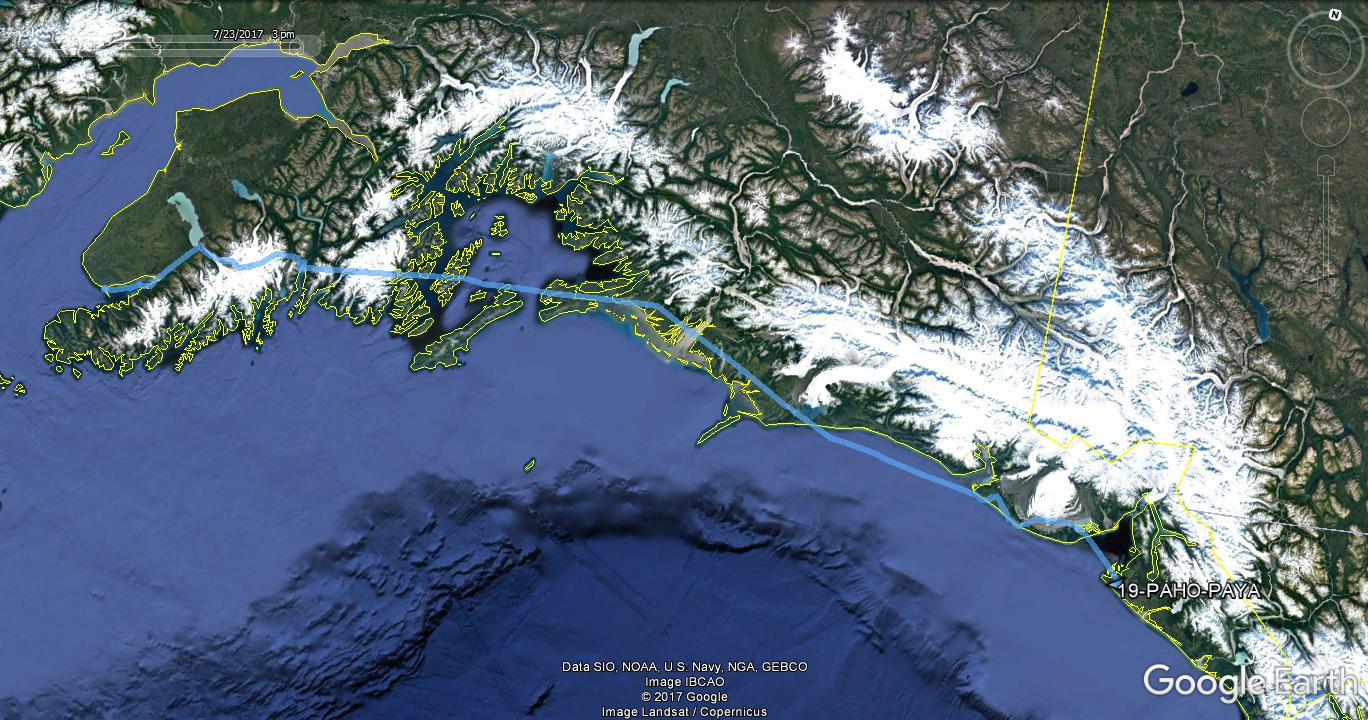
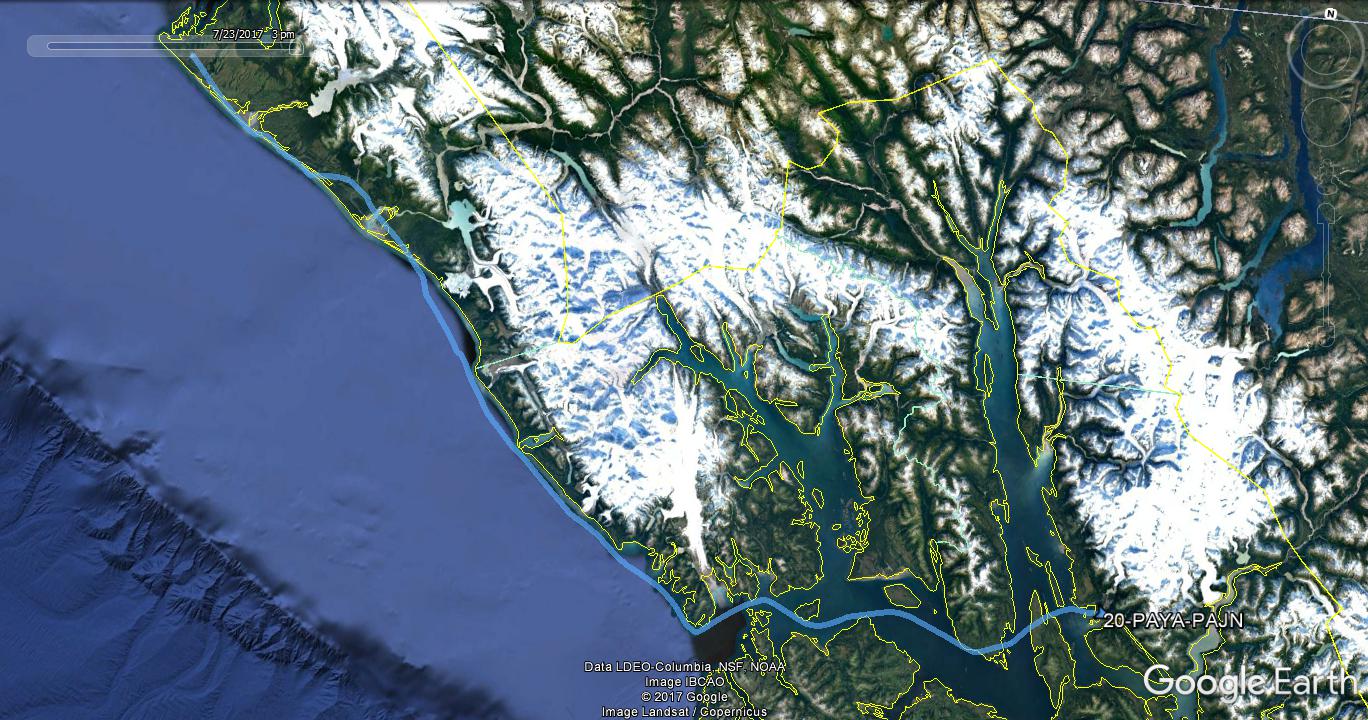
With rain forecast in Homer the next few days, and good weather on the Alaskan Panhandle, it was time to start the journey home in earnest. The first leg from Homer to Yakutat started out with some great glacier scenery as I climbed out over the Harding Ice Field towards Seward. From there, I was above a cloud layer until nearing Yakutat, where they broke up and allowed me to enjoy more scenery - Mountains above, glaciers below! The coastline in that area was likewise beautiful.
| Homer Spit and Kachemak Bay | The foot of Tustemena Glacier |
|
|
|
| Yahtse Glacier and Icy Bay | Mount Fairweather |
|
|
|
It was a pleasant day in Yakutat. The lady running the FBO invited me into the hanger to see the DC-3 they were restoring. We also had a look at the weather, and she mentioned Cape Spencer area on the way to Juneau can be tricky. It looked like low overcast but passable with good visibility on the webcams.
Heading southeast from Yakutat, there were quite a number of cabins, boats, and even an airplane camper along the coast. I was told later it's a big sport fishing area. Further along, the clouds lowered and the showers started. By Cape Spencer, things were looking very gloomy. I considered the alternatives: turn around and make the hour trip back to Yakutat; call and request IFR, except at the time I had incorrectly recalled the Juneau approach minimums were around 4500', right at the observed ceiling, so it was possible I'd go up and not be able to get back down. Gustavus was only 25nm/10 min ahead, and reporting decent visibility and ceilings, so I decided I was probably already in the worst of it, and made use of Class G VFR rules and motored on low over the water around 400' AGL. I was only just clear of the clouds at that altitude, but visibility was good and I could maintain reference to the shoreline both ahead and to the side. Conditions did in fact improve shortly thereafter, and the approach to Juneau was notable only because the approach lights make a dogleg on short final.
| Near Cape Spencer | Dogleg final to Juneau runway 8 |
|
|
|
Later that evening, I went back and looked at the time lapse of Cape Spencer on the FAA webcam site. I concluded that if I had been any later getting there, I'd probably have had to turn around.
| Cape Spencer NW | Cape Spencer SE |
| While at Yakutat, 90 minutes before | |
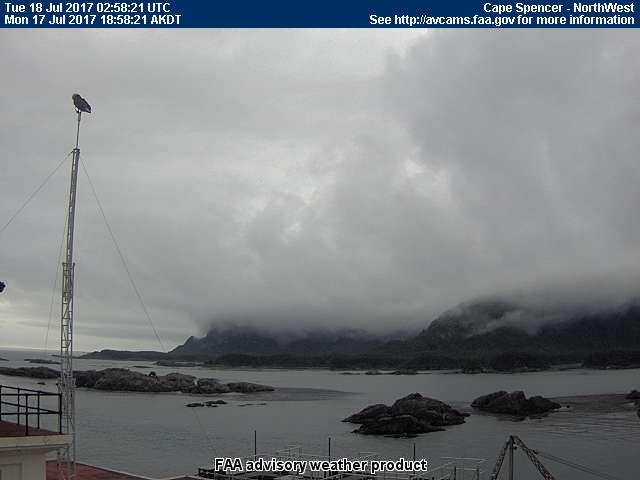
|
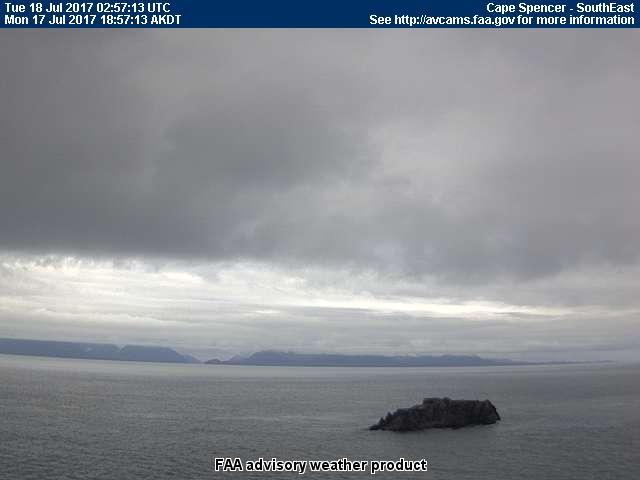
|
| Around the time I passed by | |
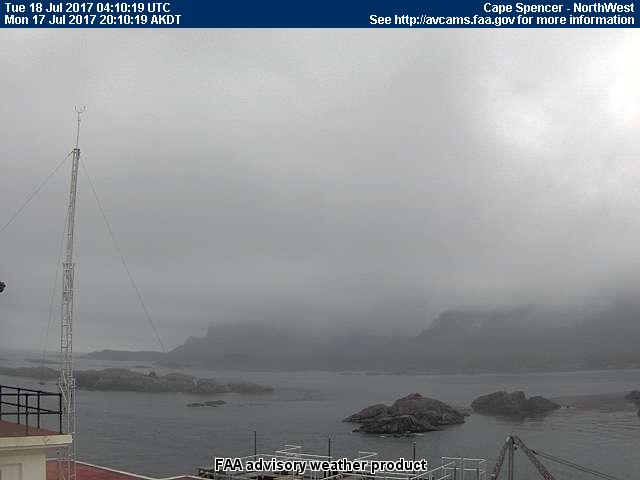
|
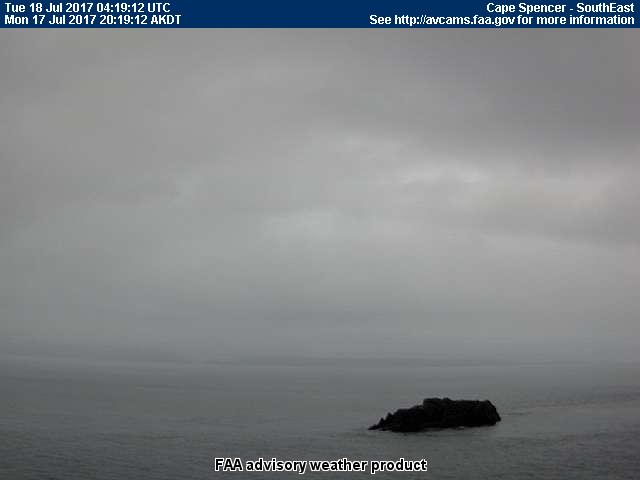
|
| About 10 minutes afterwards | |
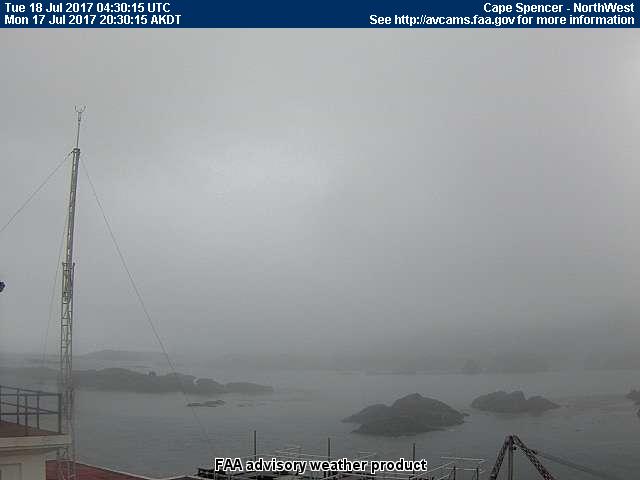
|
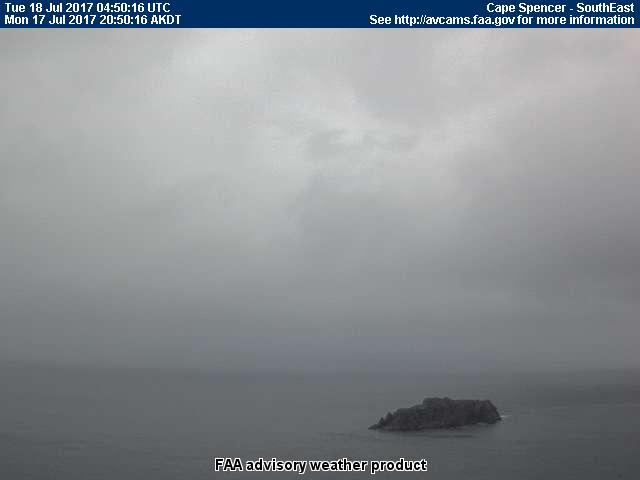
|